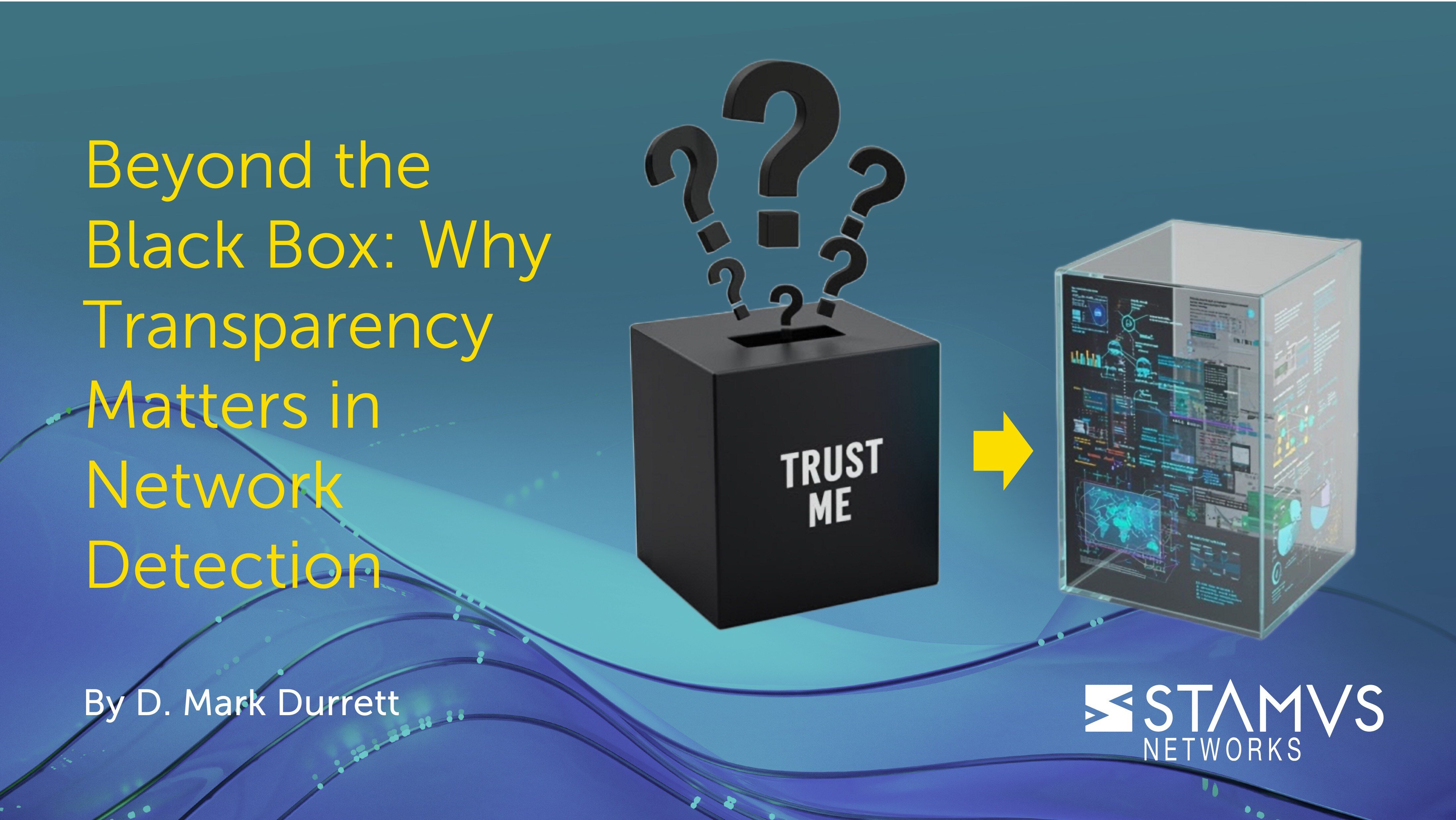You might be aware that intrusion detection systems (IDS) are incredibly effective ways to identify known malicious traffic entering your network, but are you aware of the different types of attacks and cyber threats IDS can detect? This blog post will go over different attacks IDS can detect, the different IDS detection types and classifications, and most importantly, the threats IDS cannot detect and the solutions that can.
What are the attacks detected by IDS?
An intrusion detection system in cyber security can detect a wide range of computer attacks by analyzing network traffic or system activity for suspicious patterns. Here are some common types of attacks that IDS is designed to identify:
- Scanning: These attacks involve attackers probing your network for vulnerabilities. IDS can detect port scans, vulnerability scans, and network mapping attempts.
- Denial-of-Service (DoS) attacks: These attacks aim to overwhelm your system with traffic, making it unavailable to legitimate users. IDS can detect flooding attacks like SYN floods and UDP floods.
- Social Engineering Attacks: While not directly detectable through network traffic analysis, IDS can flag anomalies associated with social engineering attempts. This may include unusual access attempts, phishing emails triggering downloads, or suspicious data transfers.
- Malware: IDS can identify attempts to download or install malware by looking for known malware signatures or suspicious file transfers.
- Exploits: These attacks leverage software vulnerabilities to gain unauthorized access. IDS can detect exploit attempts by monitoring network traffic for patterns associated with known vulnerabilities.
- Privilege Escalation: These attacks involve attackers trying to gain higher privileges within a system. IDS can flag suspicious user activity or access attempts to critical resources.
- Insider Threats: While more challenging to detect definitively, IDS can identify unusual activity patterns that might indicate insider threats, such as unauthorized access attempts from trusted accounts or data exfiltration attempts.
- and More…
What are the three types of IDS?
There are three types of IDS based on the primary detection method: anomaly-based IDS, signature-based IDS, and hybrid IDS. These methods define how the IDS analyzes data to identify potential intrusions.
- Anomaly-Based IDS: Anomaly-based IDS focuses on identifying deviations from normal behavior within a network or system. It works by establishing a baseline for normal activity by statistically analyzing network traffic or system activity over time. This baseline becomes a reference for identifying anomalies. The IDS then continuously monitors network traffic or system activity and compares the real-time data to the established baselines. Significant deviations from these baselines are flagged as potential intrusions.
- Signature-Based IDS: A signature-based IDS relies on a predefined database of attack signatures to identify malicious activity. These signatures represent known patterns or fingerprints of network attacks or suspicious system behavior. The IDS continuously monitors network traffic or system activity and compares this data against the database of attack signatures. Any matches trigger an alert, indicating a potential intrusion attempt.
- Hybrid IDS: A hybrid IDS combines both anomaly-based and signature-based detection methods to address the limitations of each approach. A hybrid system leverages signature-based detection for known threats and anomaly-based detection for novel attacks. This enhances the overall effectiveness of intrusion detection.
Each of these three detection methods (Anomaly-based, Signature-based, Hybrid) offers different strengths and weaknesses. Choosing the most suitable approach depends on factors like the specific security requirements of the network, the resource availability for managing the IDS, and the acceptable level of false positives.
What are the different ways to classify an IDS?
There are generally two different ways to classify an IDS based on its deployment and data source:
1.Network-based Intrusion Detection System (NIDS): NIDS act as network monitoring devices deployed at strategic points within a computer network. Their primary function is to continuously capture and analyze network traffic data traversing a specific network segment. NIDS can be implemented in two primary ways:
- Dedicated hardware appliances: These are specialized devices solely designed to perform NIDS functions.
- Software applications on network servers: Existing network servers can be leveraged to host NIDS software, enabling them to perform network traffic analysis alongside other server functionalities.
NIDS typically utilizes network adapter promiscuous mode. This mode allows the NIDS to capture all network traffic on the attached network segment, regardless of its intended recipient. NIDS employs two main techniques for analyzing captured network traffic data: signature-based detection and anomaly-based detection.
2.Host-Based Intrusion Detection System (HIDS): In contrast to NIDS which focuses on network traffic analysis, HIDS provides security for individual devices (hosts) within the network. HIDS function as software agents deployed directly on the operating system of the host device itself. Their primary function is to monitor and analyze activity occurring on the host device. HIDS are deployed as software agents on individual servers, desktops, or laptops within the network. A single HIDS agent is typically installed on each host device for dedicated monitoring.
HIDS collects data from various sources on the host device, including:
- System logs: These logs record events and activities within the operating system of the host device.
- File access attempts: HIDS monitors attempts to access files on the host device, including successful and failed attempts.
- Running processes: HIDS maintains a record of processes currently running on the host device.
HIDS primarily utilizes anomaly-based detection techniques. By analyzing the collected data, HIDS establishes baselines for typical host activity. Significant deviations from these baselines, such as unusual file access attempts or unexpected processes running, can indicate potential intrusions or suspicious behavior.
What will an IDS not detect?
While IDS is incredibly effective at detecting many types of threats, some more nuanced and subtle attack types are routinely missed by most IDS deployments:
- Homoglyph Attacks (Look-alike domains): These attacks use characters that appear similar to legitimate website addresses but are actually different. An IDS relies on matching traffic patterns to known threats, and these cleverly disguised domains might bypass signature-based detection.
- Malware C2 Beaconing (Command and Control Communication): Malware that communicates with a remote command center (C2) might use encryption or obfuscation techniques. An IDS focused on analyzing traffic content might miss such encrypted communication, allowing the malware to operate undetected.
- Anomalous Network Activity (Zero-Day Exploits): Anomalous network activity can be a sign of an attack, but it can also be caused by legitimate network maintenance or new applications. An IDS might struggle to distinguish between the two, especially for novel attacks (zero-day exploits) that haven't been defined as threats yet.
- Suspicious User Behavior (Insider Threats): An IDS is primarily focused on analyzing network traffic. It might not be able to detect suspicious behavior within a network, such as authorized users accessing unauthorized data or exceeding their privileges. This is where monitoring user activity and implementing strong access controls become crucial.
Explore a modern alternative
You need a network security platform that doesn’t generate an endless stream of useless alerts across part of your network, and instead automatically identifies alerts of interest and notifies you of only serious and imminent threats. Your organization deserves response-ready detection with visibility into your entire network regardless of the environment with easy access to all the contextual evidence you need to stop an attack before it can cause damage. Replace your legacy IDS with a modern network detection and response platform that gives you these features and more.
The Stamus Security Platform™ is a network-based threat detection and response solution that eliminates the challenges of legacy IDS while lowering your response time. Stamus Security Platform harnesses the full potential of your network, bringing state-of-the-art threat detection, automated event triage, and unparalleled visibility to the security team.
Book a demo to see if the Stamus Security Platform is right for your organization.
To learn more about replacing your legacy IDS, check out the following resources:
- A Practical Guide for Migrating from Your Legacy IDS/IPS to a Modern Alternative
- 12 Signs It's Time to Upgrade your Legacy IDS/IPS
- 3 Critical Questions to Answer Before a Legacy IDS/IPS Upgrade
- Weak Attack Signals your Legacy IDS will Miss
To be notified of new blog posts and other news, make sure to subscribe to the Stamus Networks blog, follow us on Twitter, LinkedIn, and Facebook, or join our Discord.






